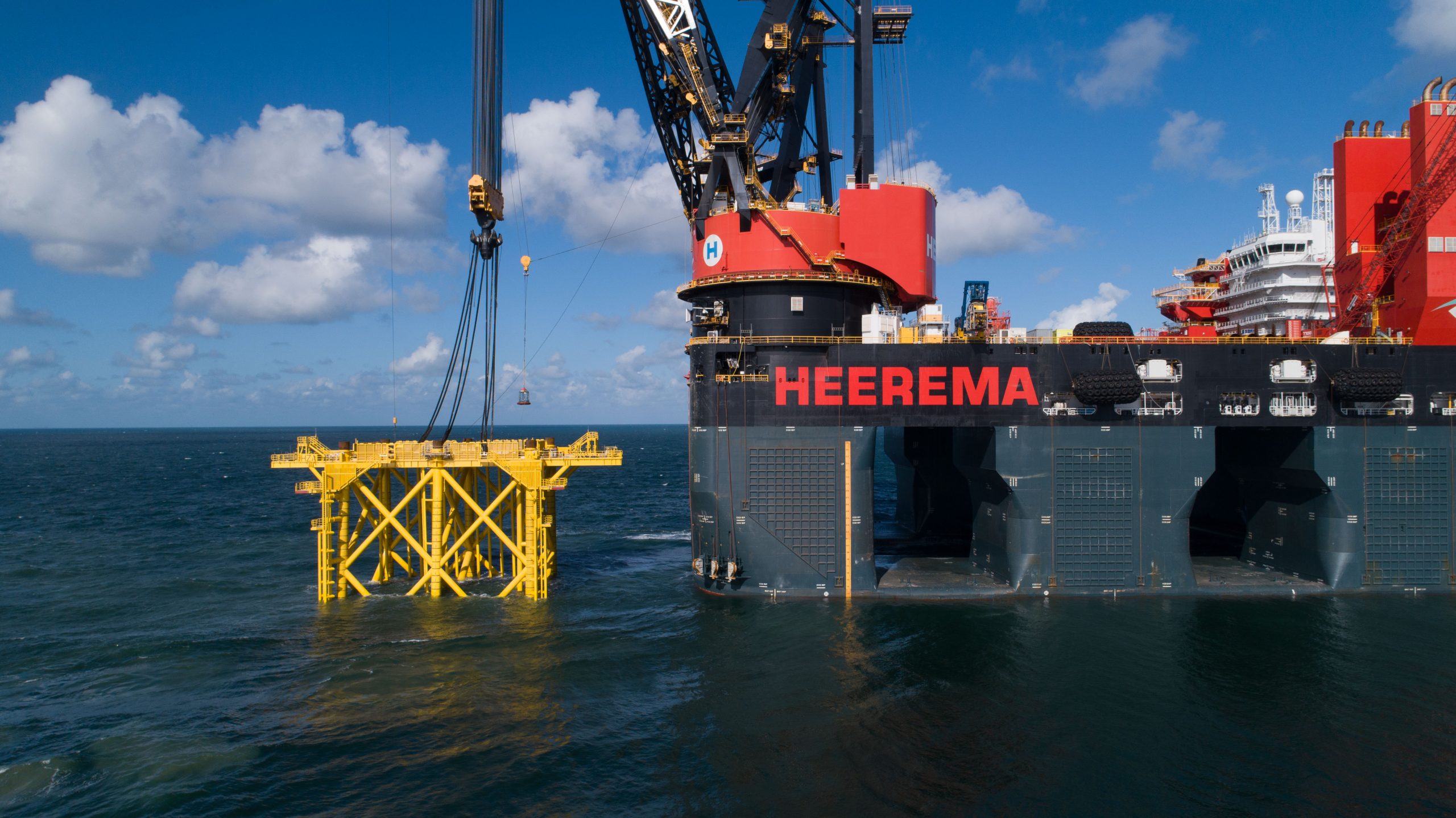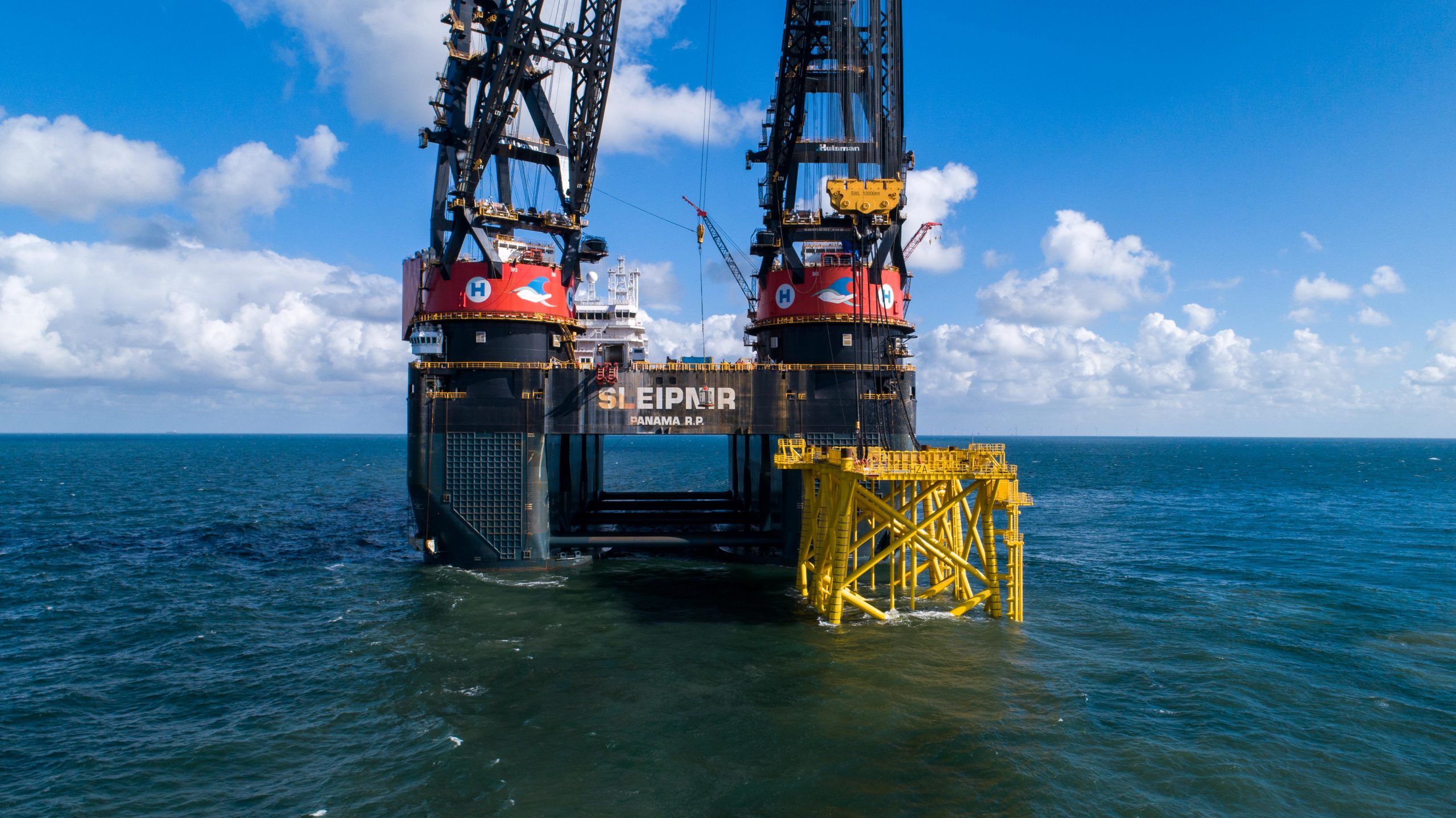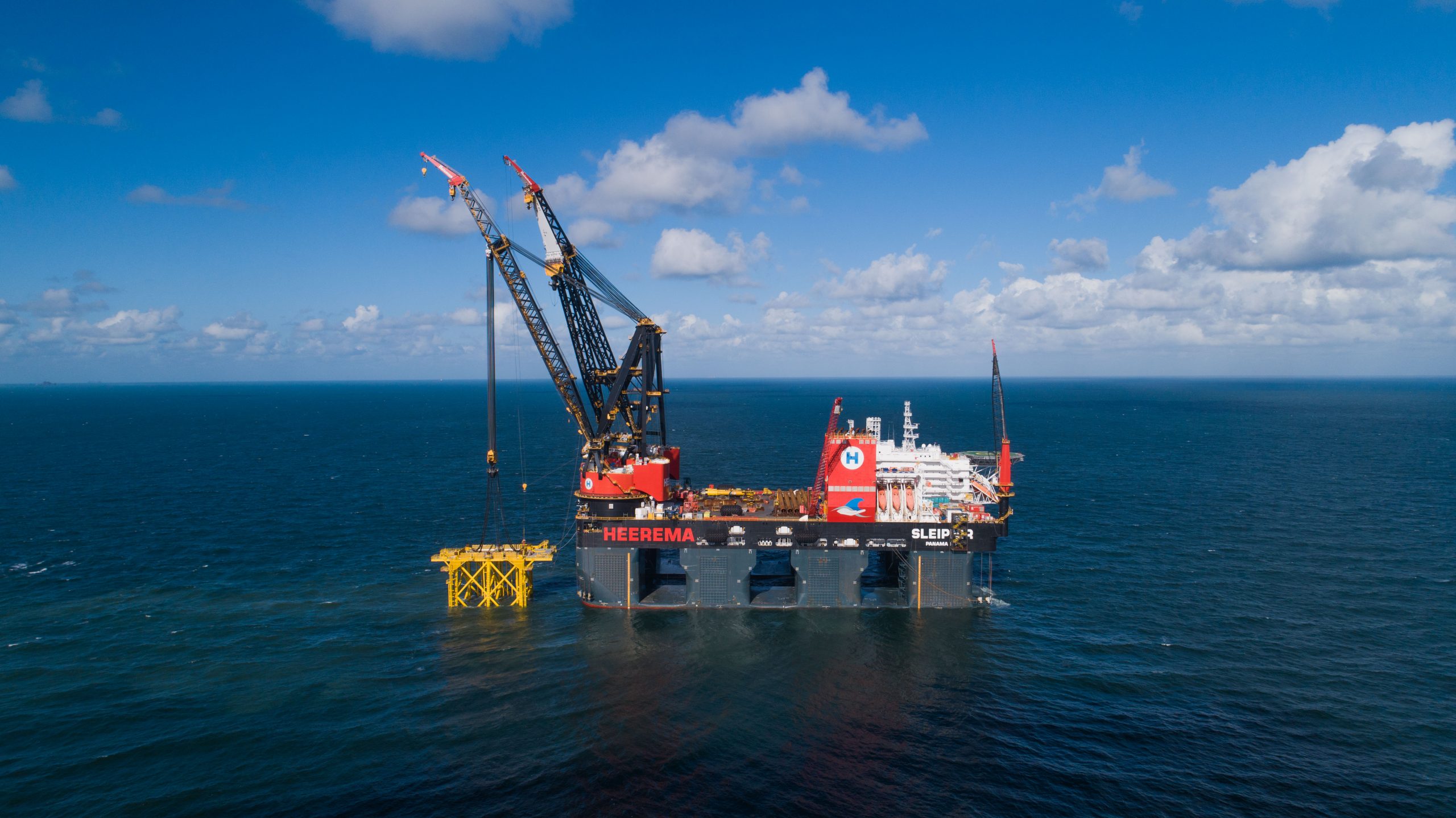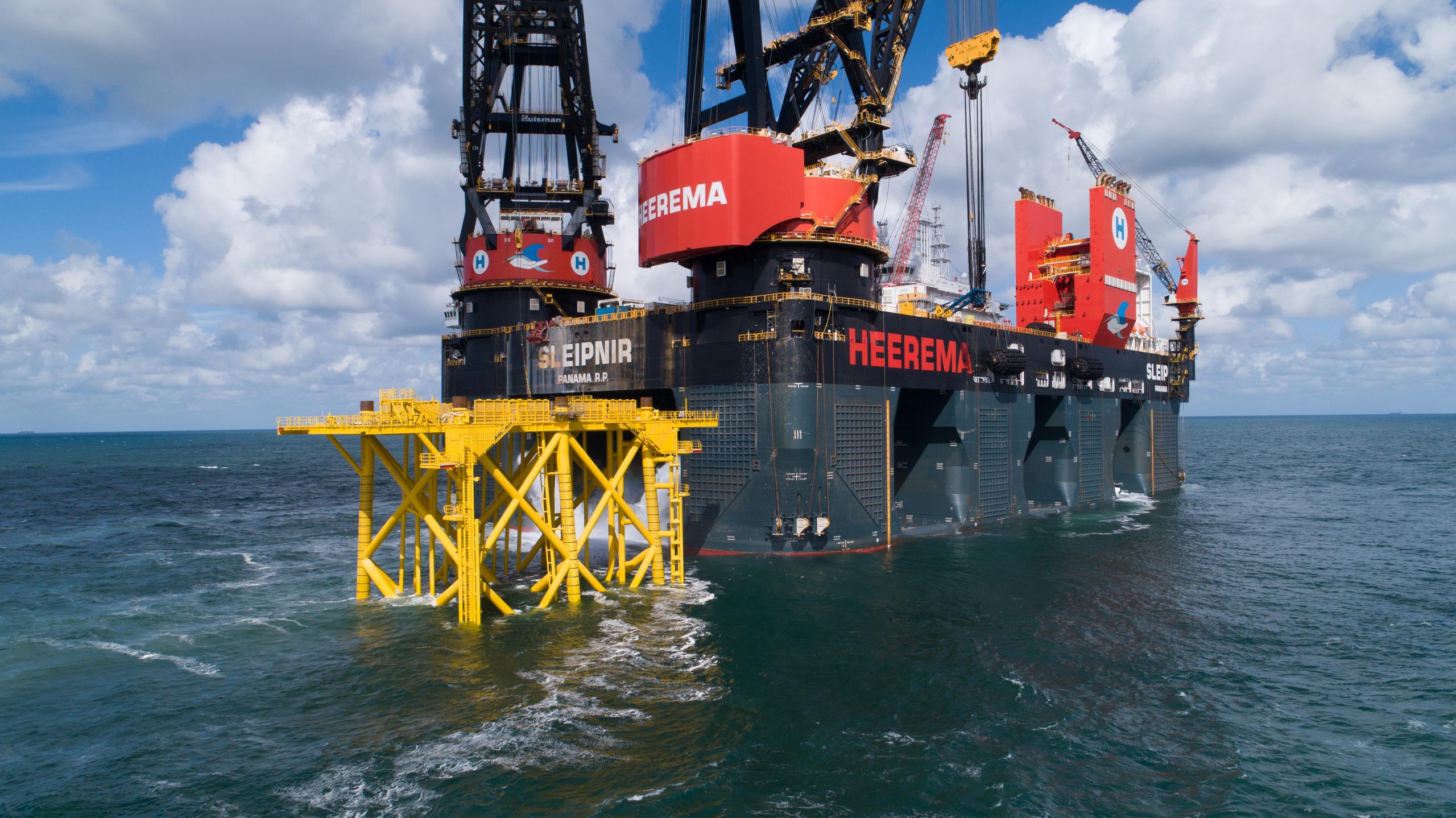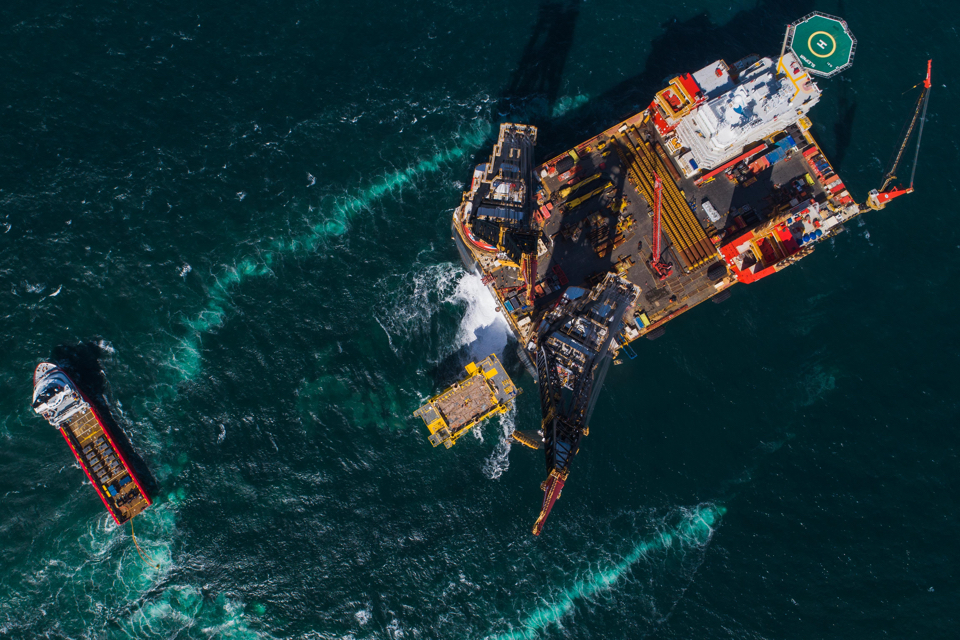The first jacket of TenneT’s Hollandse Kust (zuid) offshore platform has been installed in the seabed. The heavyweight Alpha jacket of 3200 tonnes was transported and installed by Heerema’s heavy lift crane vessel Sleipnir.
This project is Sleipnir, Heerema’s largest vessel, first job in the wind sector. For the installation, Sleipnir picked up the Alpha jacket in Vats, Norway, on September 2 before sailing to the Hollandse Kust (zuid) location around 23 kilometres from Scheveningen, the Netherlands. Installation was finalised on September 9.
The jacket is 29 metres long, 20 metres wide and 46 metres high. It is the foundation for the first of two transformer substations for Hollandse Kust (zuid). The two 220-kV sea cables that bring the power from the wind farms ashore will be connected to the Alpha jacket in the next months. In 2021, the topsides of the substation will be installed onto the jacket. The offshore platform is expected to be in operation at the end of 2021. Vattenfall will use the Alpha and Beta platforms to connect the Hollandse Kust (zuid) wind farms to the grid.
By the end of 2023, TenneT will have constructed 3500 MW offshore grid connections for offshore wind farms. The first 1400 MW has been realised with the delivery of Borssele Alpha and Beta. It will then be the turn of Hollandse Kust (zuid) Alpha and Beta, followed by Hollandse Kust (noord). TenneT is using five identical 700-MW transformer platforms for these wind farms.
These platforms are located close to the wind farms and all five use the same type of 220-kV cable connections to the coast. TenneT COO Tim Meyerjürgens: ‘Such standardisation enables TenneT to complete these projects more efficiently, more quickly and more economically.’
Offshore Grid Programme 2024-2030
According to the Dutch Government’s “Follow-up Roadmap for Offshore Wind Energy”, a further 6.1 GW of offshore wind farms will be built from 2024 through to the end of 2030. These wind farms will be located in the wind energy areas known as Hollandse Kust (west), Ten Noorden van de Waddeneilanden and IJmuiden Ver. For the first two, TenneT will again be using three standardised 700 MW platforms (2.1 GW).
The efficient connection of wind energy areas further out into the North Sea, such as IJmuiden Far (4 GW), will partly require other technologies that use direct current instead of alternating current. IJmuiden Ver will have two offshore converter stations, each with a capacity of 2 GW, which is unique in the offshore wind industry.
A video of the installation by the Sleipnir is available in the tweet below.
En we hebben beeld! 44 seconden video van de #installatie van het 3200 ton zware #jacket in project #HollandseKustZuid. Op dit moment wordt de laatste hand aan de installatie gelegd. Alles nog eens op een rij? Check ons #persbericht https://t.co/51mqPrp2Ox #TenneT #netopzee #wind pic.twitter.com/jRclU46J8o
— TenneT TSO (@TenneTTSO) September 7, 2020
